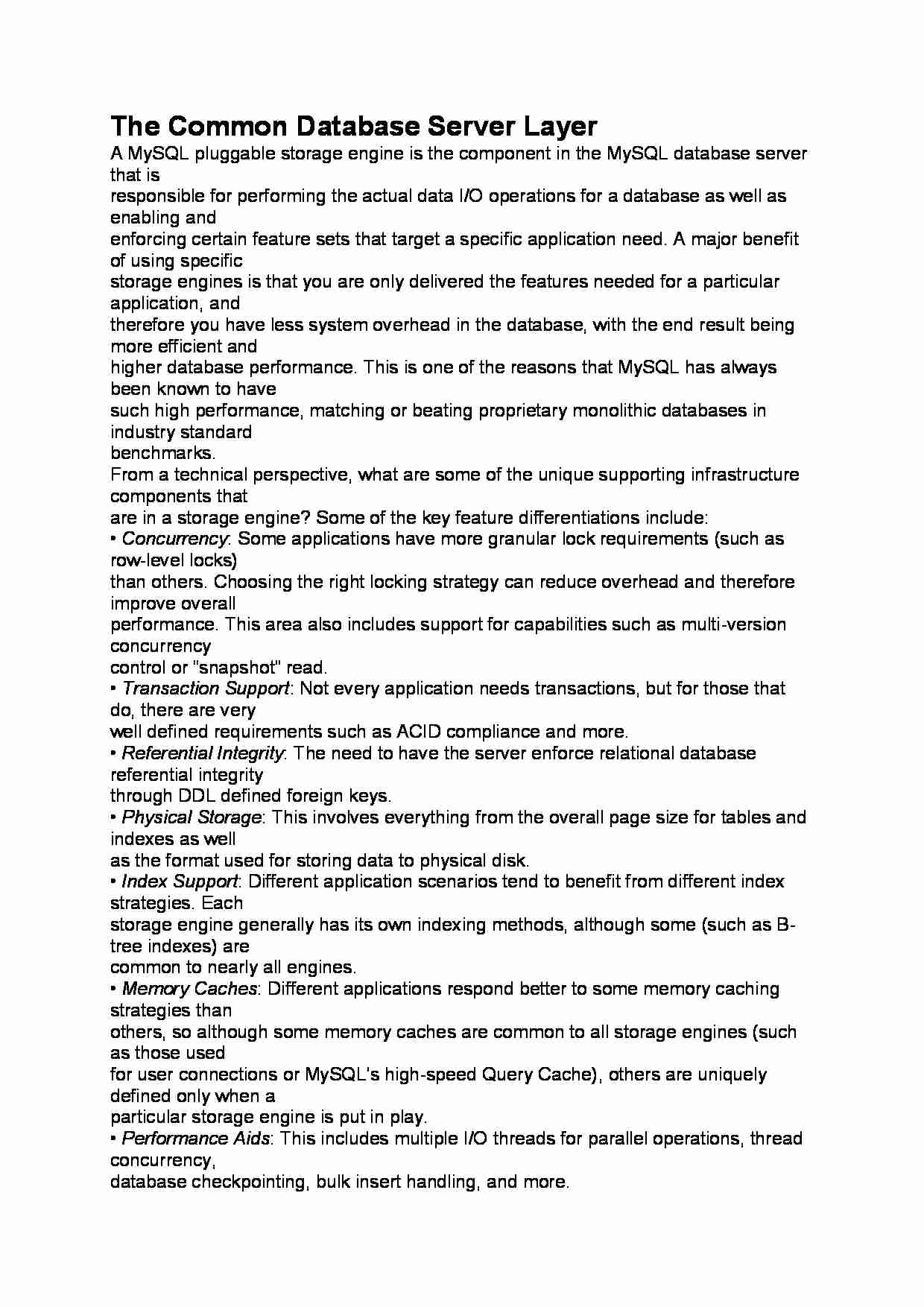To tylko jedna z 2 stron tej notatki. Zaloguj się aby zobaczyć ten dokument.
Zobacz
całą notatkę


The Common Database Server Layer
A MySQL pluggable storage engine is the component in the MySQL database server that is
responsible for performing the actual data I/O operations for a database as well as enabling and
enforcing certain feature sets that target a specific application need. A major benefit of using specific
storage engines is that you are only delivered the features needed for a particular application, and
therefore you have less system overhead in the database, with the end result being more efficient and
higher database performance. This is one of the reasons that MySQL has always been known to have
such high performance, matching or beating proprietary monolithic databases in industry standard
benchmarks.
From a technical perspective, what are some of the unique supporting infrastructure components that
are in a storage engine? Some of the key feature differentiations include:
• Concurrency: Some applications have more granular lock requirements (such as row-level locks)
than others. Choosing the right locking strategy can reduce overhead and therefore improve overall
performance. This area also includes support for capabilities such as multi-version concurrency
control or “snapshot” read.
• Transaction Support: Not every application needs transactions, but for those that do, there are very
well defined requirements such as ACID compliance and more.
• Referential Integrity: The need to have the server enforce relational database referential integrity
through DDL defined foreign keys.
• Physical Storage: This involves everything from the overall page size for tables and indexes as well
as the format used for storing data to physical disk.
• Index Support: Different application scenarios tend to benefit from different index strategies. Each
storage engine generally has its own indexing methods, although some (such as B-tree indexes) are
common to nearly all engines.
• Memory Caches: Different applications respond better to some memory caching strategies than
others, so although some memory caches are common to all storage engines (such as those used
for user connections or MySQL's high-speed Query Cache), others are uniquely defined only when a
particular storage engine is put in play.
• Performance Aids: This includes multiple I/O threads for parallel operations, thread concurrency,
database checkpointing, bulk insert handling, and more.
• Miscellaneous Target Features: This may include support for geospatial operations, security
restrictions for certain data manipulation operations, and other similar features.
... zobacz całą notatkę




Komentarze użytkowników (0)